Презентація на тему «Charlotte Bronte» (варіант 2)
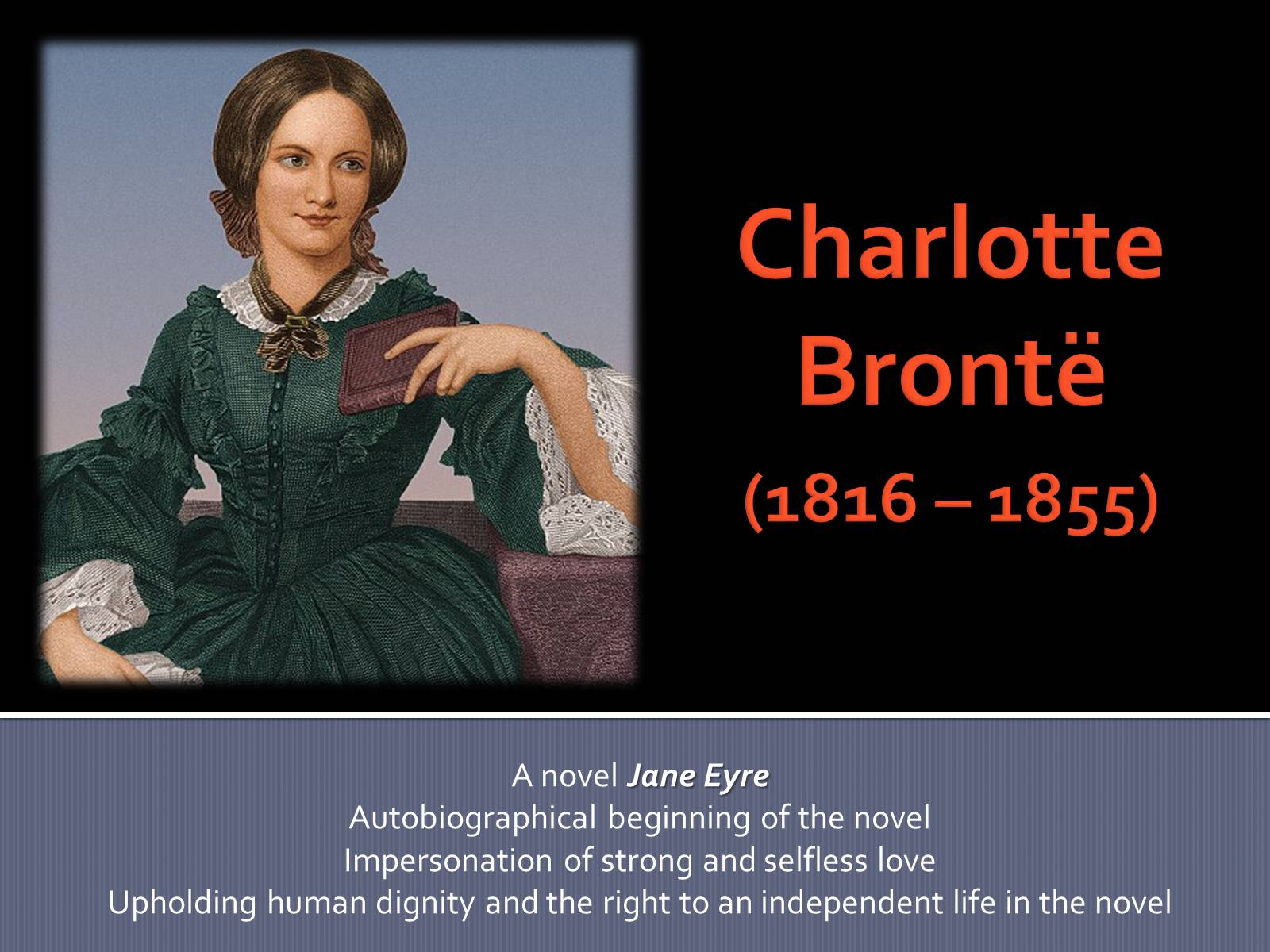
Charlotte Brontë(1816 – 1855)
A novel Jane Eyre
Autobiographical beginning of the novel
Impersonation of strong and selfless love
Upholding human dignity and the right to an independent life in the novel
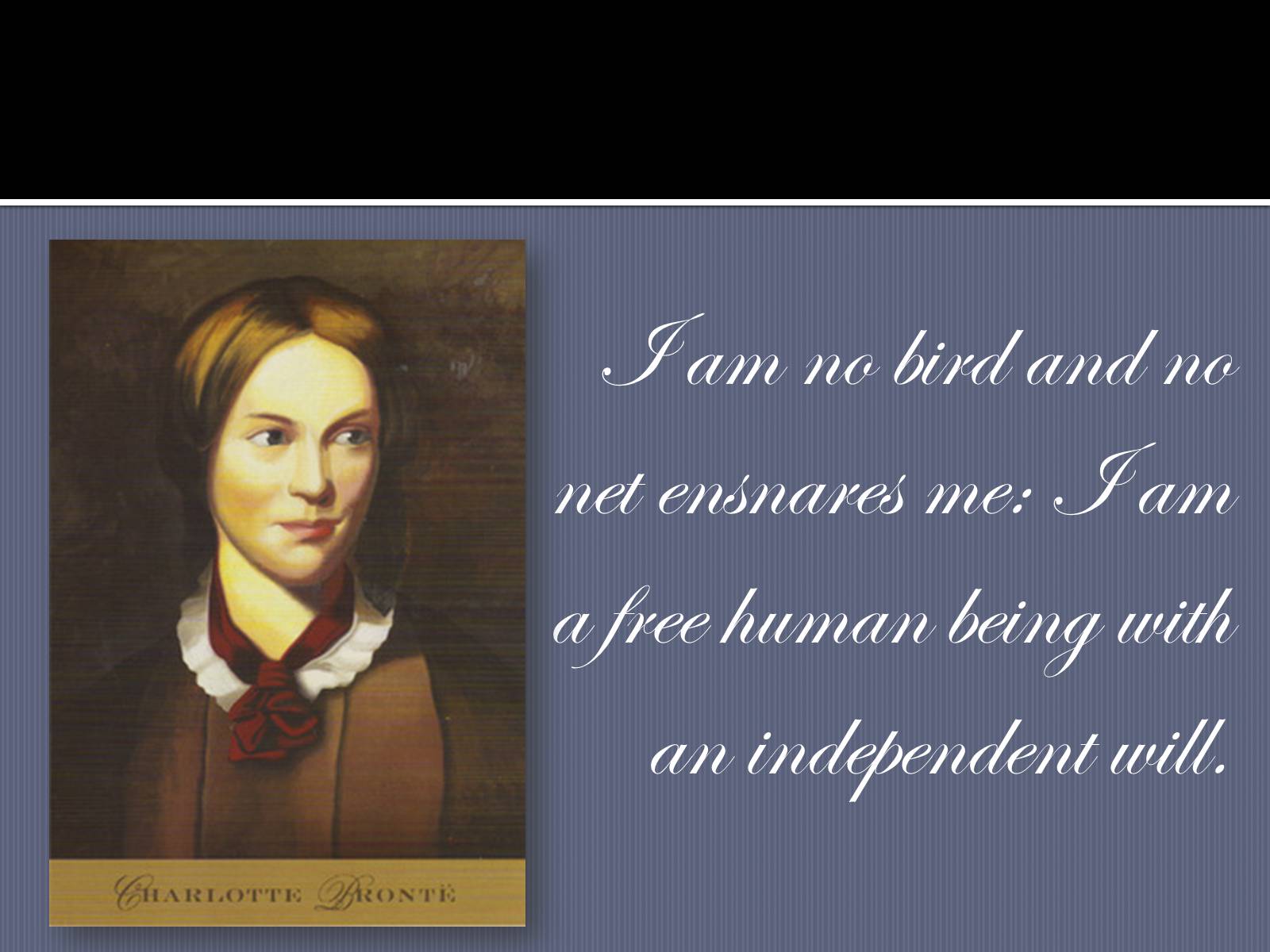
I am no bird and no net ensnares me: I am a free human being with an independent will.
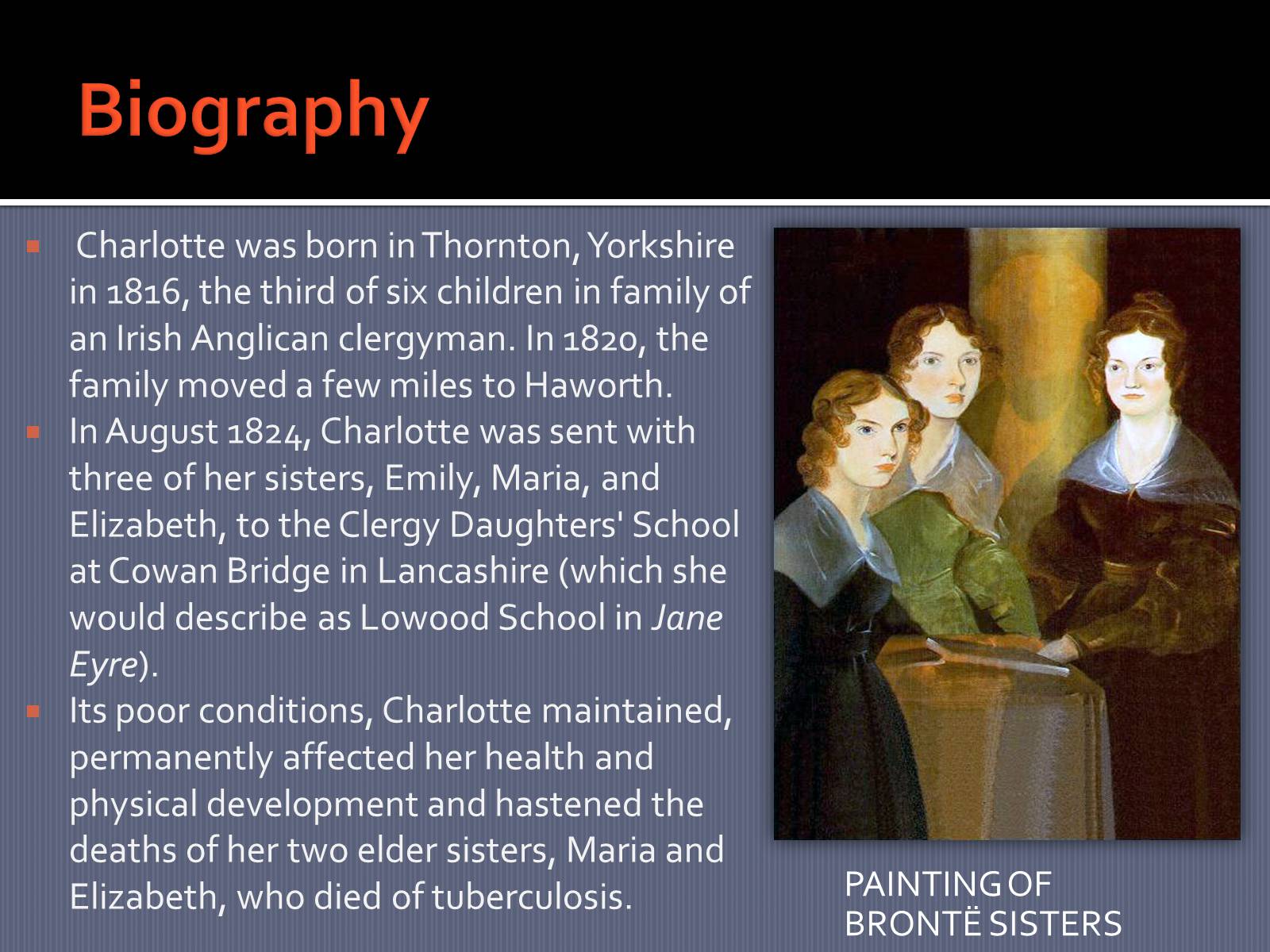
Biography
Painting of Brontë sisters
Charlotte was born in Thornton, Yorkshire in 1816, the third of six children in family of an Irish Anglican clergyman. In 1820, the family moved a few miles to Haworth.
In August 1824, Charlotte was sent with three of her sisters, Emily, Maria, and Elizabeth, to the Clergy Daughters' School at Cowan Bridge in Lancashire (which she would describe as Lowood School in Jane Eyre).
Its poor conditions, Charlotte maintained, permanently affected her health and physical development and hastened the deaths of her two elder sisters, Maria and Elizabeth, who died of tuberculosis.
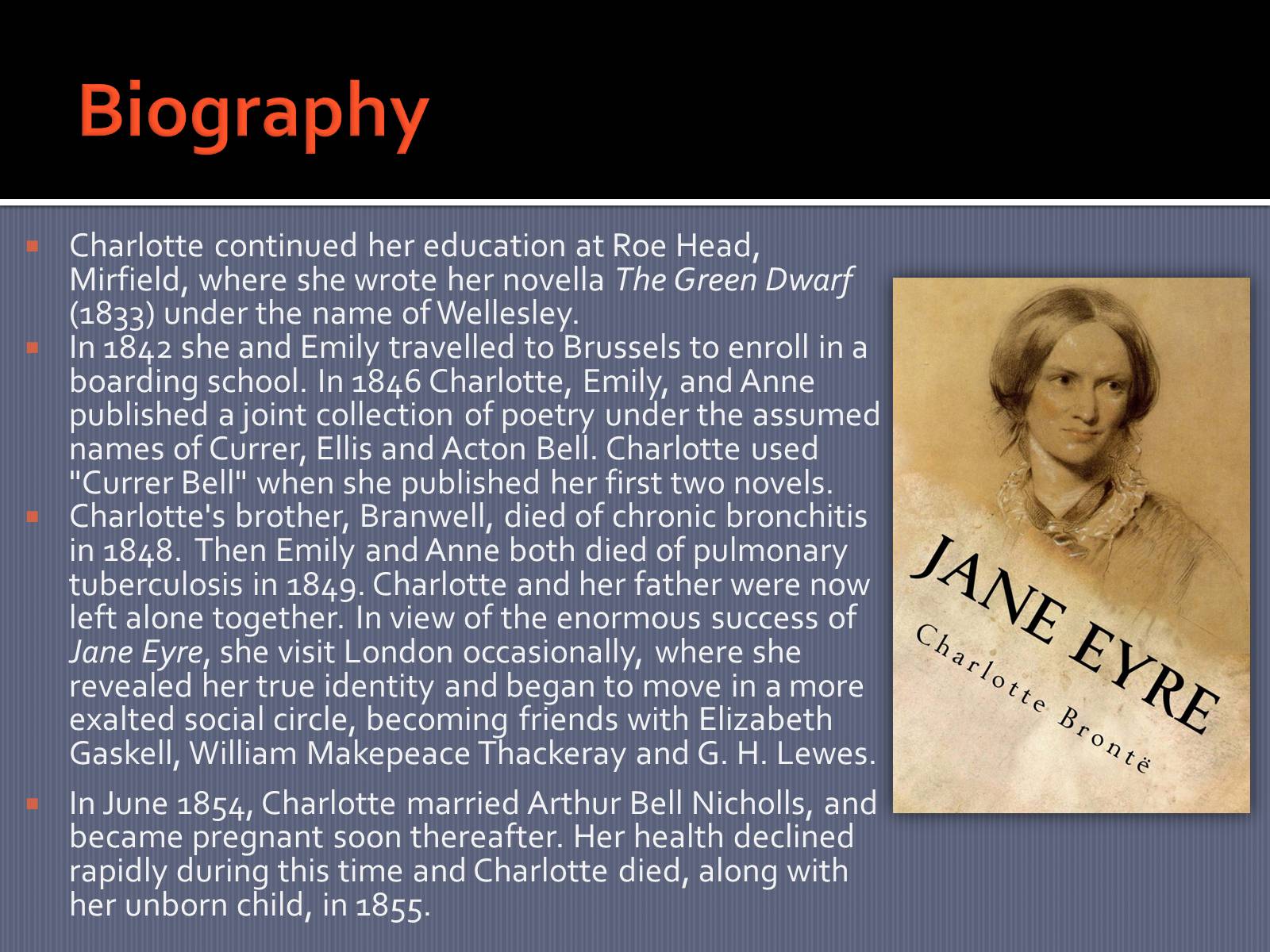
Biography
Charlotte continued her education at Roe Head, Mirfield, where she wrote her novella The Green Dwarf (1833) under the name of Wellesley.
In 1842 she and Emily travelled to Brussels to enroll in a boarding school. In 1846 Charlotte, Emily, and Anne published a joint collection of poetry under the assumed names of Currer, Ellis and Acton Bell. Charlotte used "Currer Bell" when she published her first two novels.
Charlotte's brother, Branwell, died of chronic bronchitis in 1848. Then Emily and Anne both died of pulmonary tuberculosis in 1849. Charlotte and her father were now left alone together. In view of the enormous success of Jane Eyre, she visit London occasionally, where she revealed her true identity and began to move in a more exalted social circle, becoming friends with Elizabeth Gaskell, William Makepeace Thackeray and G. H. Lewes.
In June 1854, Charlotte married Arthur Bell Nicholls, and became pregnant soon thereafter. Her health declined rapidly during this time and Charlotte died, along with her unborn child, in 1855.
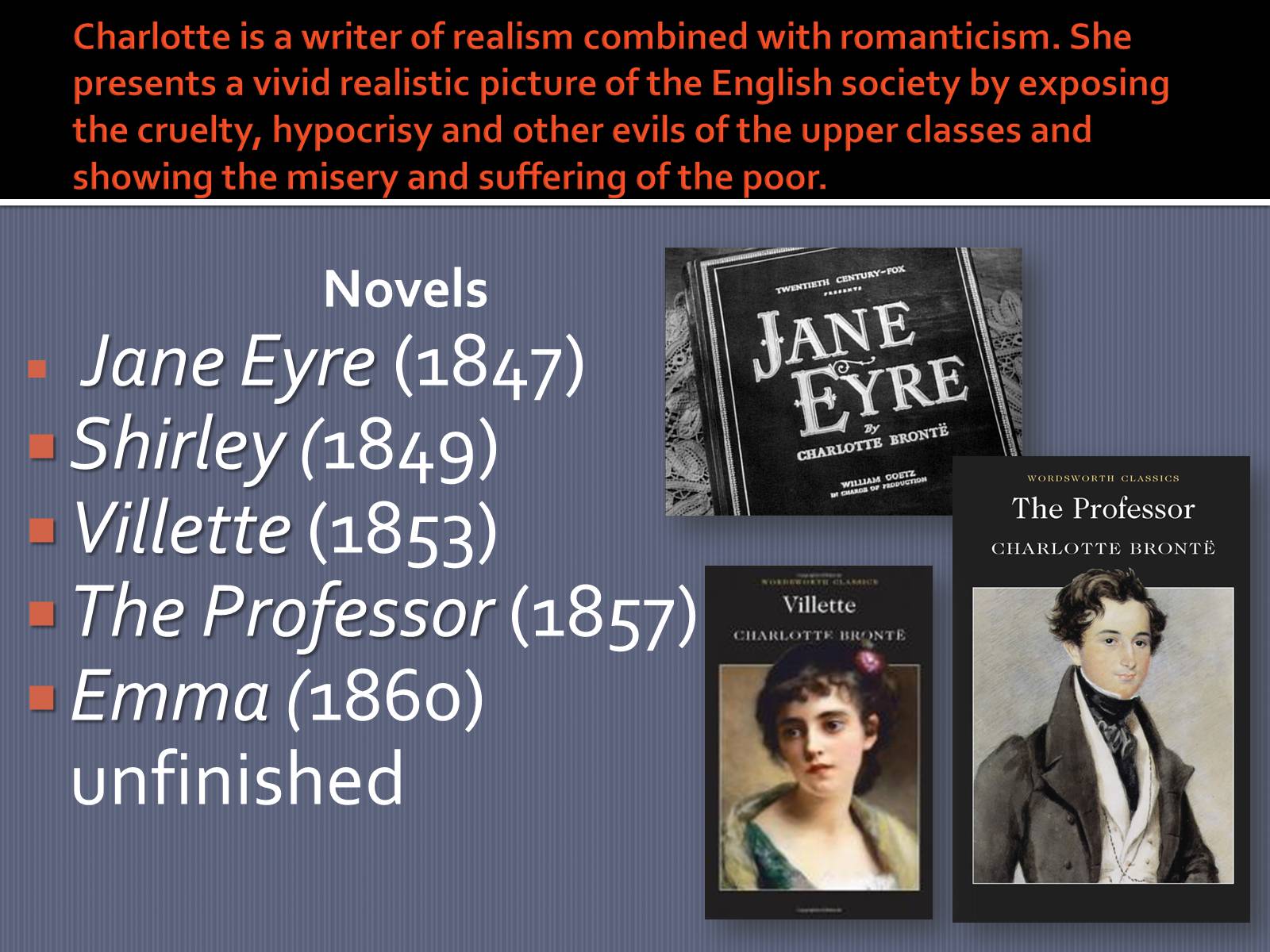
Charlotte is a writer of realism combined with romanticism. She presents a vivid realistic picture of the English society by exposing the cruelty, hypocrisy and other evils of the upper classes and showing the misery and suffering of the poor.
Novels
Jane Eyre (1847)
Shirley (1849)
Villette (1853)
The Professor (1857)
Emma (1860) unfinished
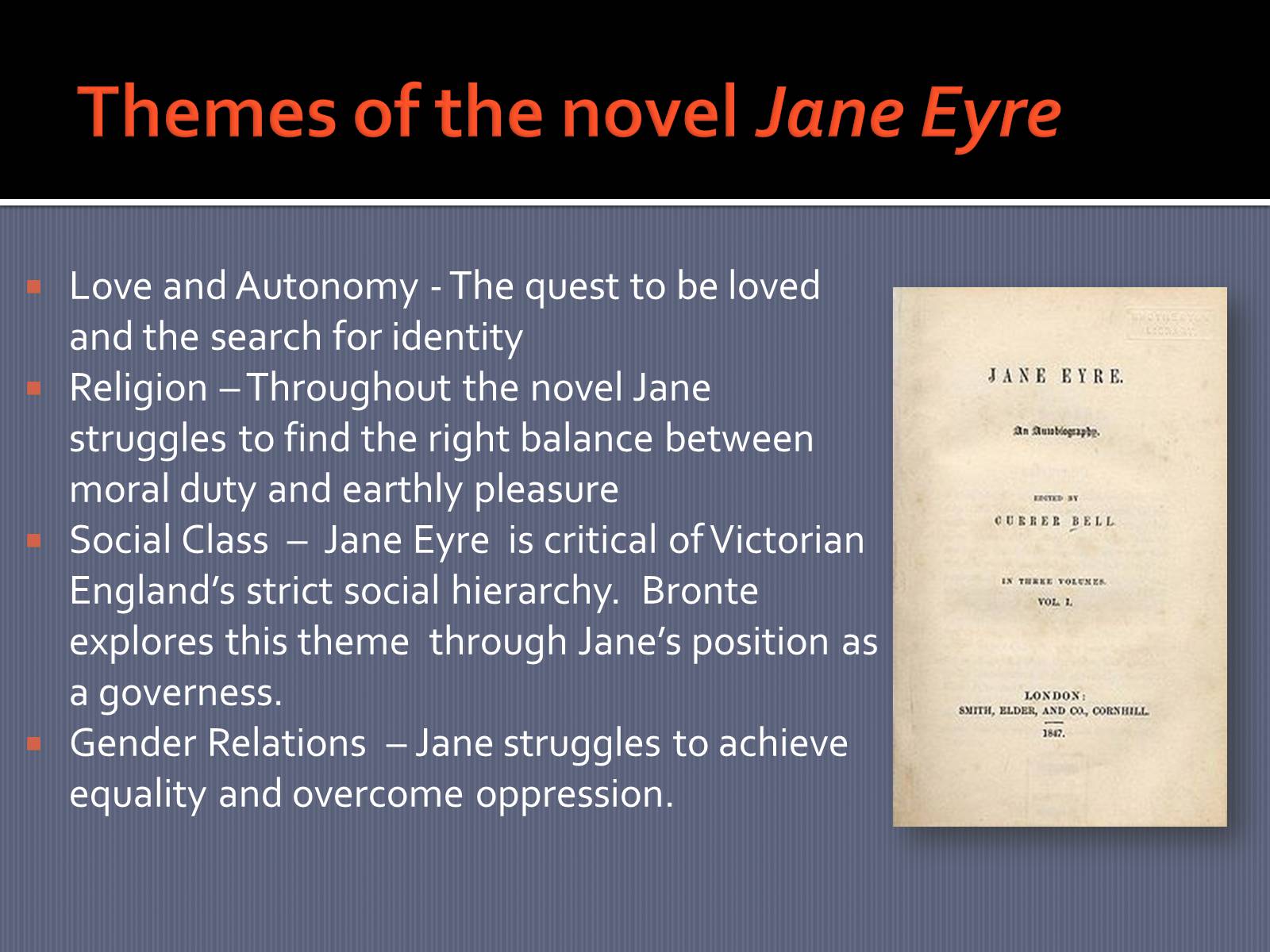
Themes of the novel Jane Eyre
Love and Autonomy - The quest to be loved and the search for identity
Religion – Throughout the novel Jane struggles to find the right balance between moral duty and earthly pleasure
Social Class – Jane Eyre is critical of Victorian England's strict social hierarchy. Bronte explores this theme through Jane's position as a governess.
Gender Relations – Jane struggles to achieve equality and overcome oppression.
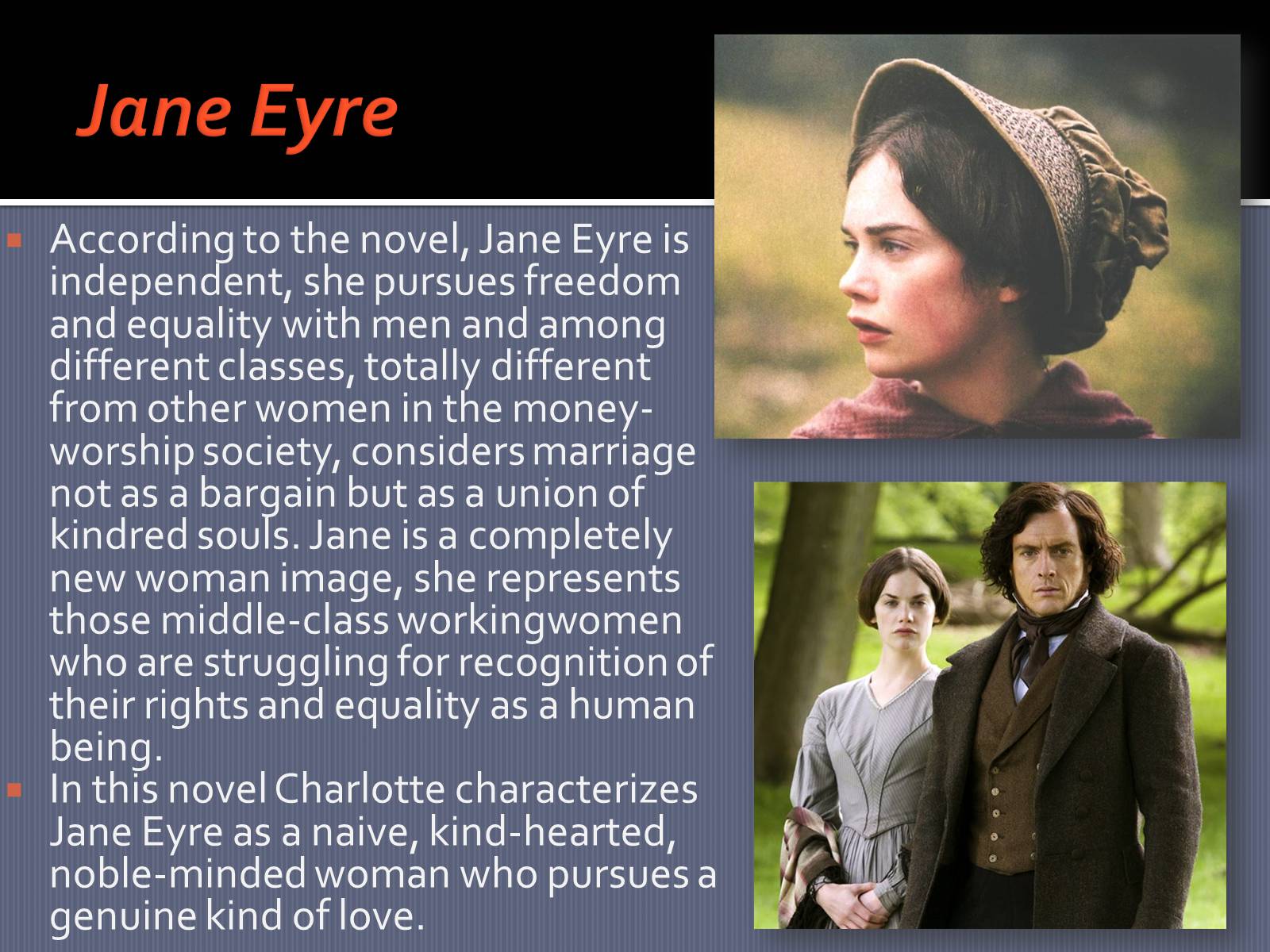
Jane Eyre
According to the novel, Jane Eyre is independent, she pursues freedom and equality with men and among different classes, totally different from other women in the money-worship society, considers marriage not as a bargain but as a union of kindred souls. Jane is a completely new woman image, she represents those middle-class workingwomen who are struggling for recognition of their rights and equality as a human being.
In this novel Charlotte characterizes Jane Eyre as a naive, kind-hearted, noble-minded woman who pursues a genuine kind of love.
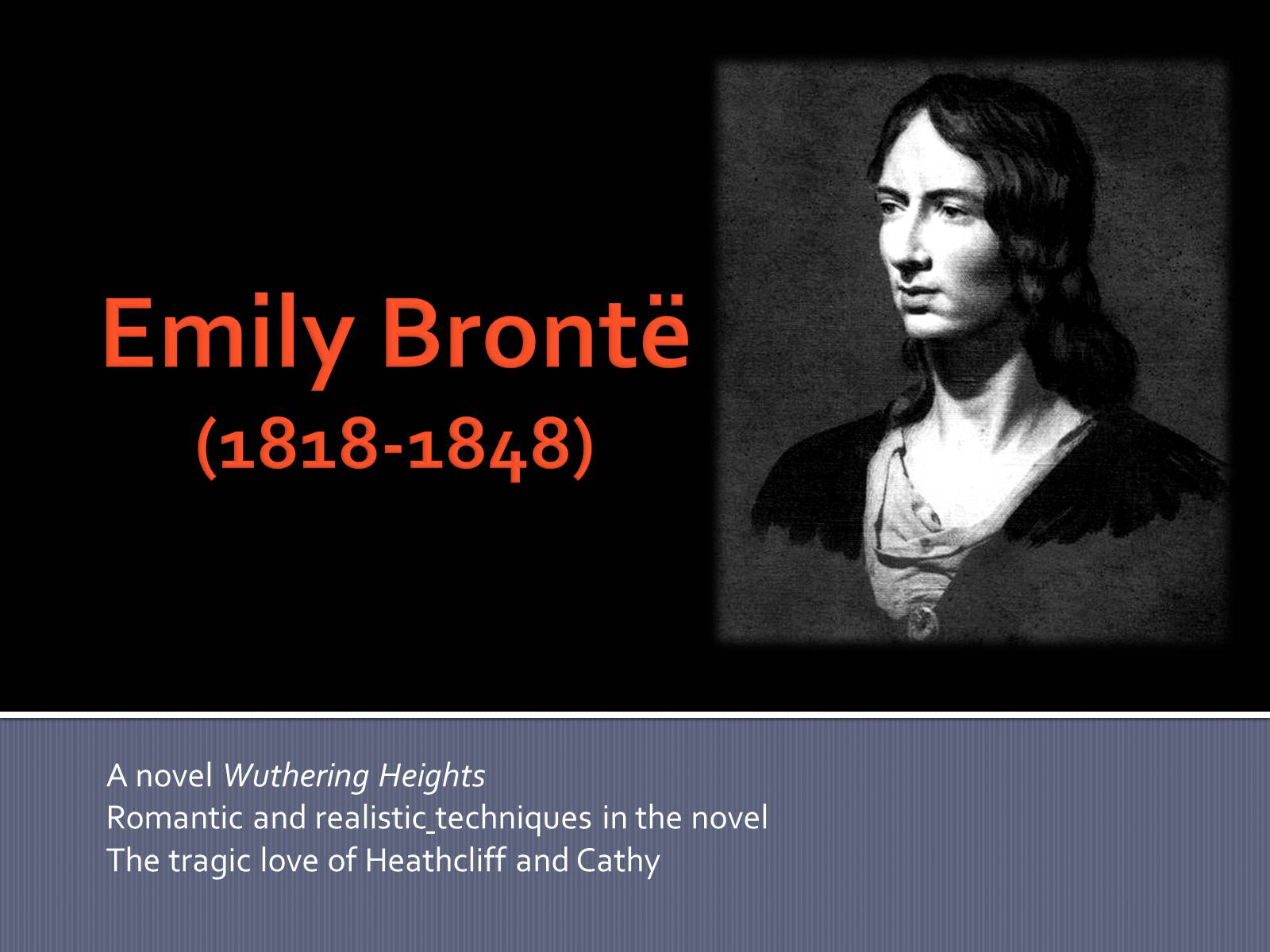
Emily Brontë(1818-1848)
A novel Wuthering Heights
Romantic and realistic techniques in the novel
The tragic love of Heathcliff and Cathy
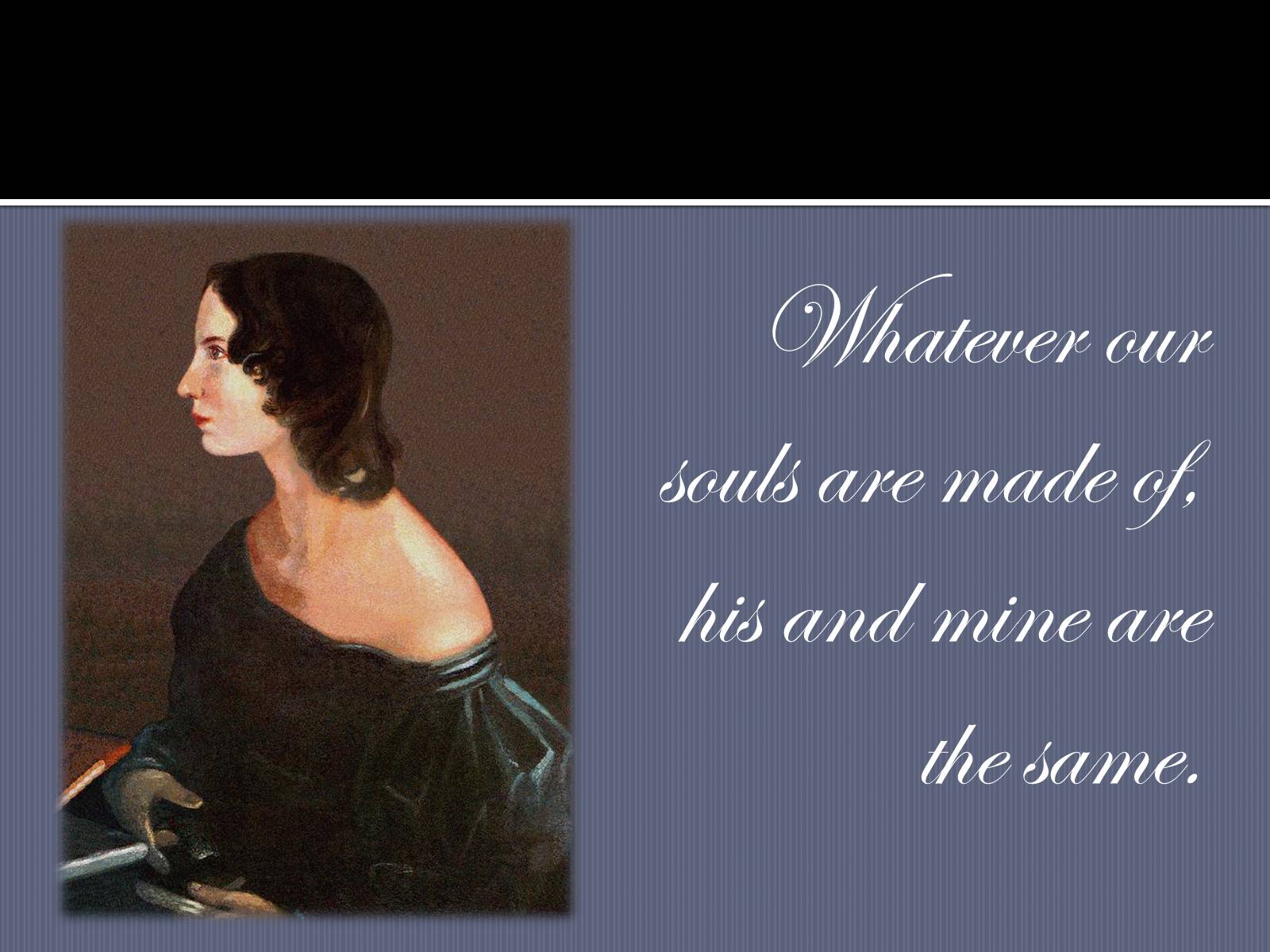
Whatever our souls are made of, his and mine are the same.
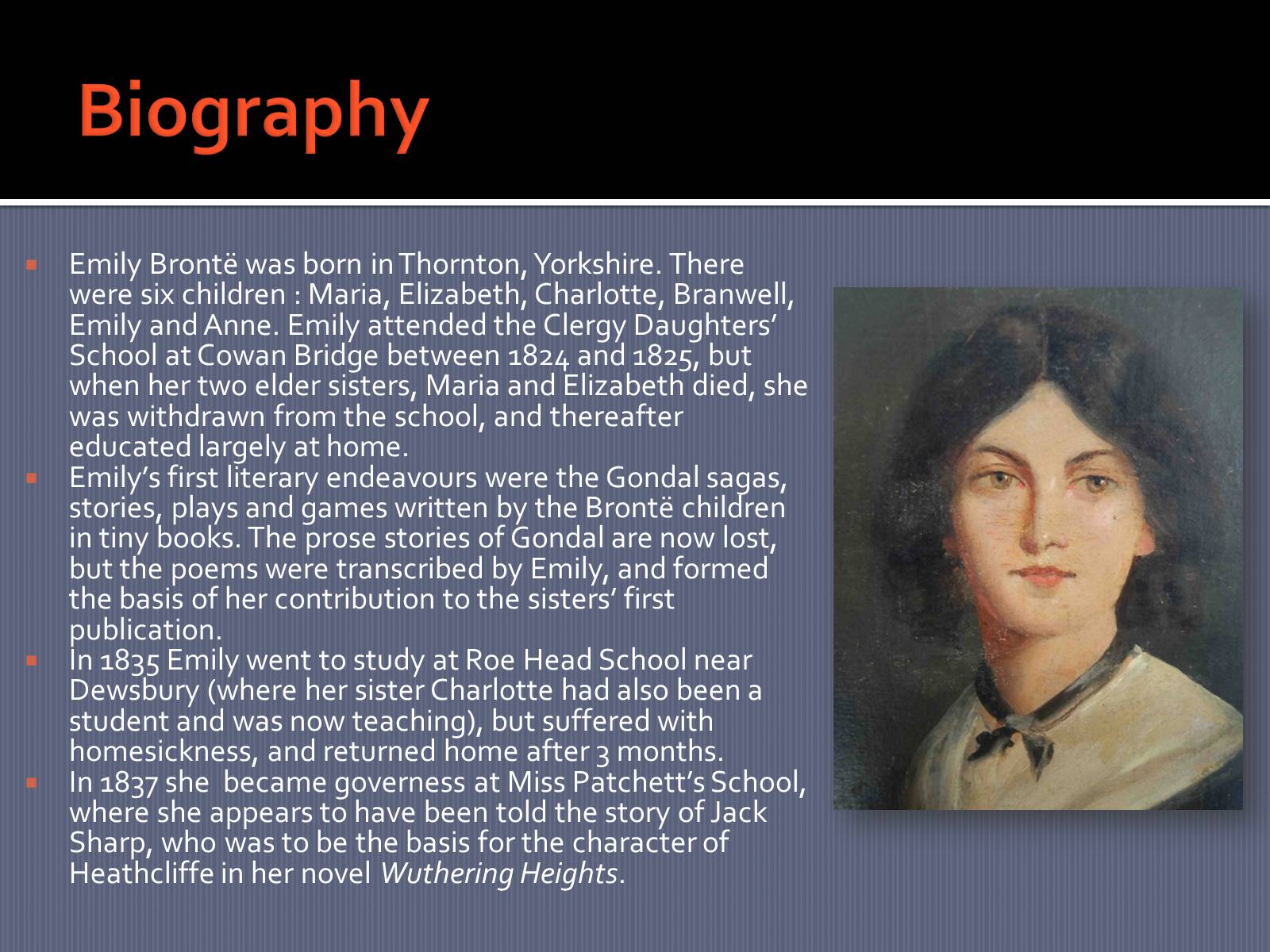
Biography
Emily Brontë was born in Thornton, Yorkshire. There were six children : Maria, Elizabeth, Charlotte, Branwell, Emily and Anne. Emily attended the Clergy Daughters' School at Cowan Bridge between 1824 and 1825, but when her two elder sisters, Maria and Elizabeth died, she was withdrawn from the school, and thereafter educated largely at home.
Emily's first literary endeavours were the Gondal sagas, stories, plays and games written by the Brontë children in tiny books. The prose stories of Gondal are now lost, but the poems were transcribed by Emily, and formed the basis of her contribution to the sisters' first publication.
In 1835 Emily went to study at Roe Head School near Dewsbury (where her sister Charlotte had also been a student and was now teaching), but suffered with homesickness, and returned home after 3 months.
In 1837 she became governess at Miss Patchett's School, where she appears to have been told the story of Jack Sharp, who was to be the basis for the character of Heathcliffe in her novel Wuthering Heights.
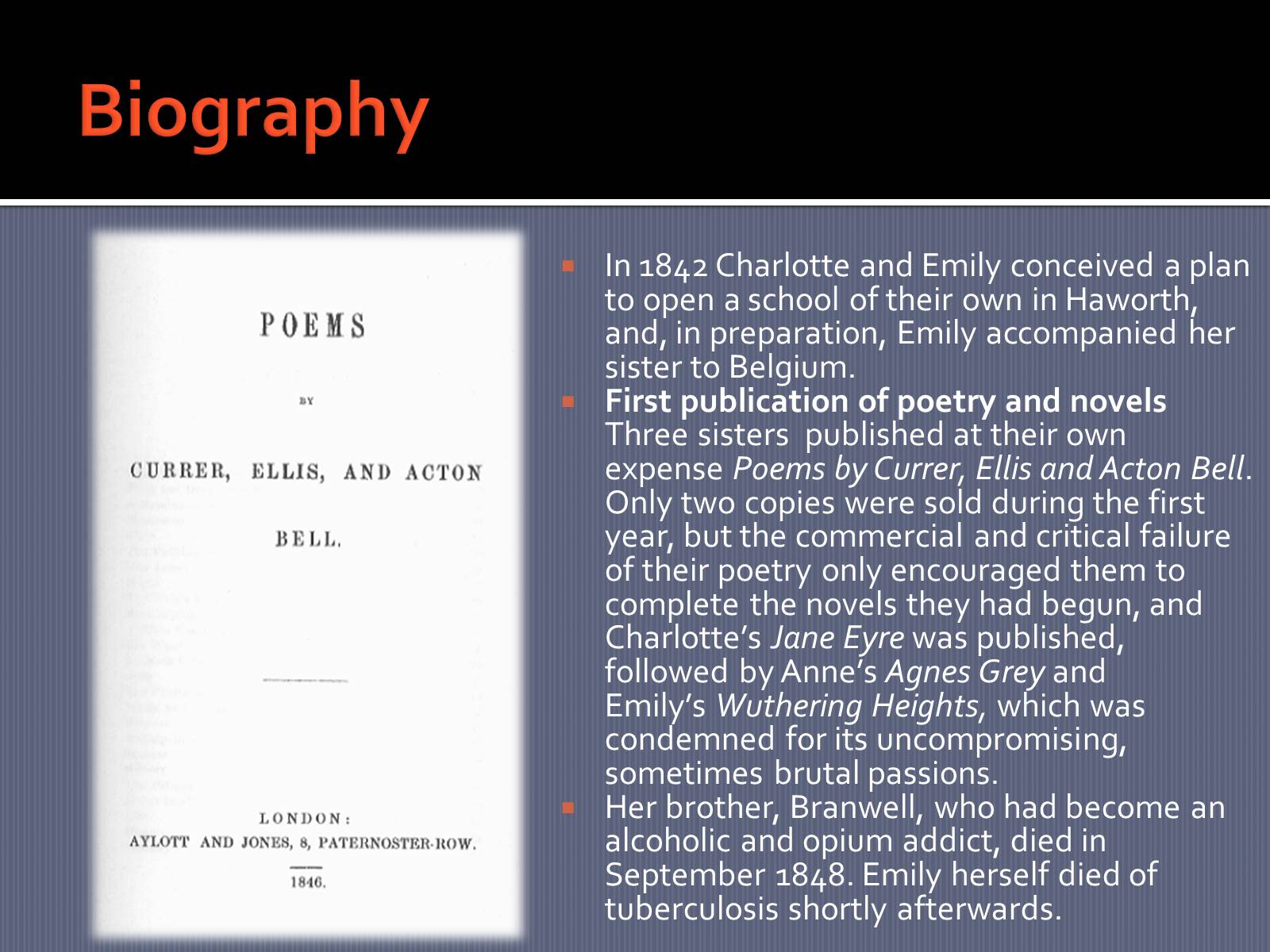
Biography
In 1842 Charlotte and Emily conceived a plan to open a school of their own in Haworth, and, in preparation, Emily accompanied her sister to Belgium.
First publication of poetry and novelsThree sisters published at their own expense Poems by Currer, Ellis and Acton Bell. Only two copies were sold during the first year, but the commercial and critical failure of their poetry only encouraged them to complete the novels they had begun, and Charlotte's Jane Eyre was published, followed by Anne's Agnes Grey and Emily's Wuthering Heights, which was condemned for its uncompromising, sometimes brutal passions.
Her brother, Branwell, who had become an alcoholic and opium addict, died in September 1848. Emily herself died of tuberculosis shortly afterwards.
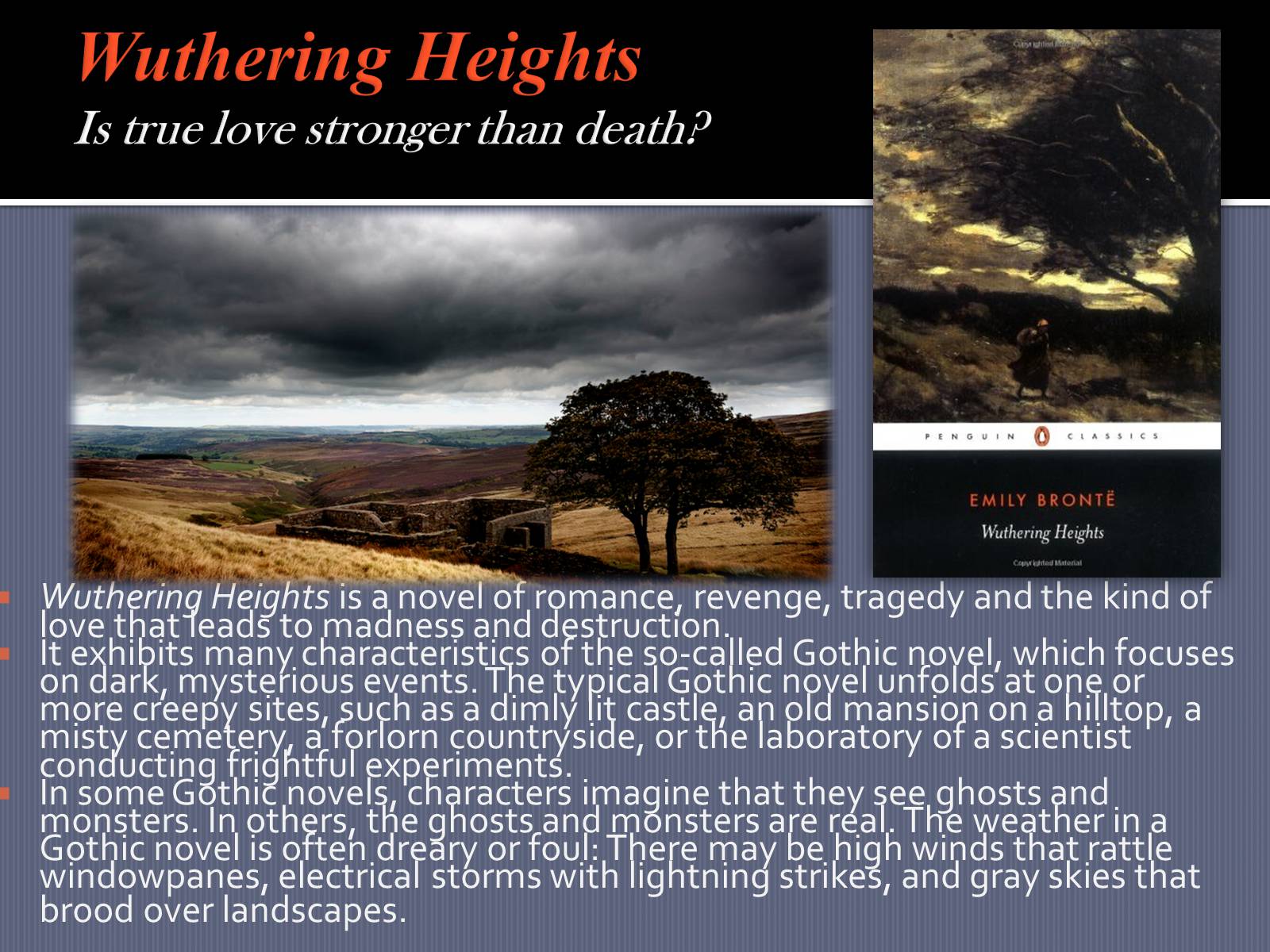
Wuthering Heights Is true love stronger than death?
Wuthering Heights is a novel of romance, revenge, tragedy and the kind of love that leads to madness and destruction.
It exhibits many characteristics of the so-called Gothic novel, which focuses on dark, mysterious events. The typical Gothic novel unfolds at one or more creepy sites, such as a dimly lit castle, an old mansion on a hilltop, a misty cemetery, a forlorn countryside, or the laboratory of a scientist conducting frightful experiments.
In some Gothic novels, characters imagine that they see ghosts and monsters. In others, the ghosts and monsters are real. The weather in a Gothic novel is often dreary or foul: There may be high winds that rattle windowpanes, electrical storms with lightning strikes, and gray skies that brood over landscapes.
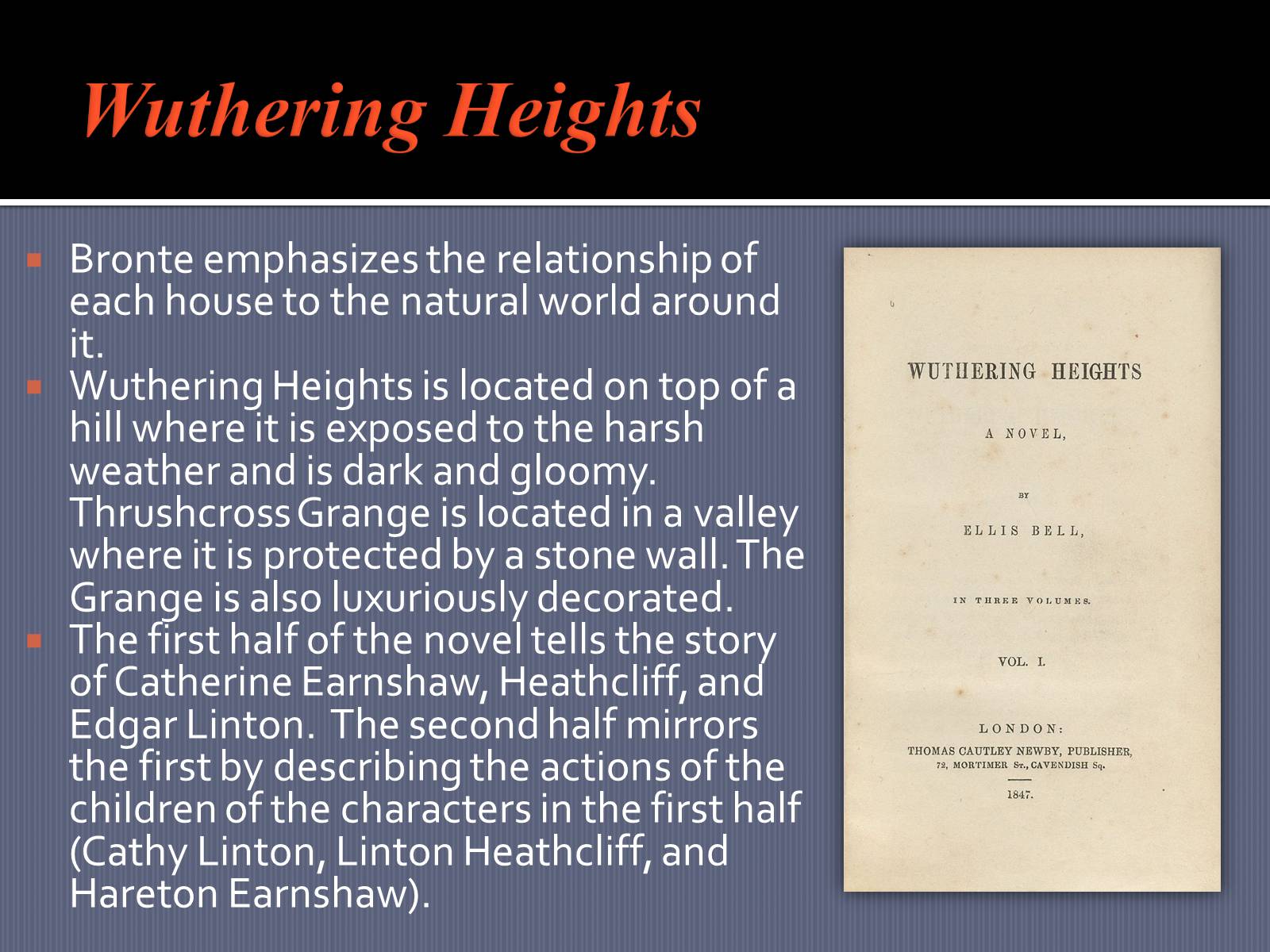
Wuthering Heights
Bronte emphasizes the relationship of each house to the natural world around it.
Wuthering Heights is located on top of a hill where it is exposed to the harsh weather and is dark and gloomy. Thrushcross Grange is located in a valley where it is protected by a stone wall. The Grange is also luxuriously decorated.
The first half of the novel tells the story of Catherine Earnshaw, Heathcliff, and Edgar Linton. The second half mirrors the first by describing the actions of the children of the characters in the first half (Cathy Linton, Linton Heathcliff, and Hareton Earnshaw).
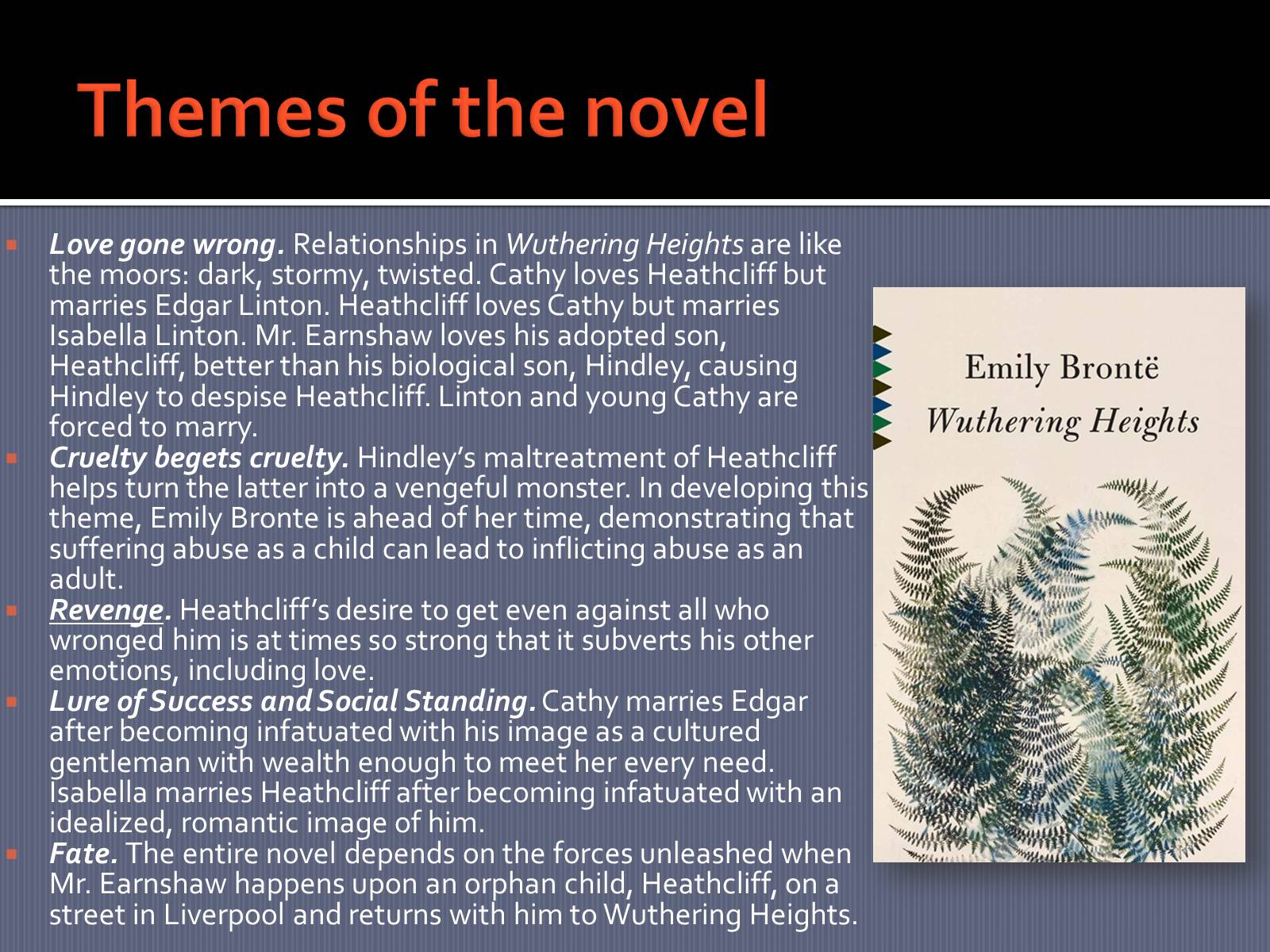
Themes of the novel
Love gone wrong. Relationships in Wuthering Heights are like the moors: dark, stormy, twisted. Cathy loves Heathcliff but marries Edgar Linton. Heathcliff loves Cathy but marries Isabella Linton. Mr. Earnshaw loves his adopted son, Heathcliff, better than his biological son, Hindley, causing Hindley to despise Heathcliff. Linton and young Cathy are forced to marry.
Cruelty begets cruelty. Hindley's maltreatment of Heathcliff helps turn the latter into a vengeful monster. In developing this theme, Emily Bronte is ahead of her time, demonstrating that suffering abuse as a child can lead to inflicting abuse as an adult.
Revenge. Heathcliff's desire to get even against all who wronged him is at times so strong that it subverts his other emotions, including love.
Lure of Success and Social Standing. Cathy marries Edgar after becoming infatuated with his image as a cultured gentleman with wealth enough to meet her every need. Isabella marries Heathcliff after becoming infatuated with an idealized, romantic image of him.
Fate. The entire novel depends on the forces unleashed when Mr. Earnshaw happens upon an orphan child, Heathcliff, on a street in Liverpool and returns with him to Wuthering Heights.